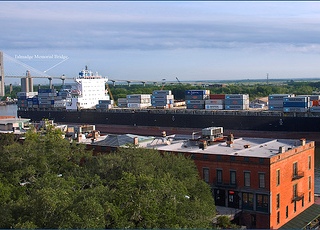 Profitability for the container shipping industry will remain elusive if carriers refuse to cut capacity to stabilize freight rates, warns Drewry Maritime Research.
Profitability for the container shipping industry will remain elusive if carriers refuse to cut capacity to stabilize freight rates, warns Drewry Maritime Research.
Though the industry could almost break even this year, the short- and mid-term outlook for the sector does not bode well unless serious capacity cuts are undertaken, the London-based research and consultancy specialist said.
“How well the operators manage capacity deployment during this time will largely determine where freight rates and overall profitability settles,” Drewry said in its annual Container Market Review and Forecast 2012/13.
Specifically, Drewry said the times call for more continued slow steaming and more idling of capacity, which have been at a relatively low level over the last 12 months.
The sector at present faces few positive indicators—demand on the headhaul trades is weak and will remain so for the next 15 months, the charter market is showing no signs of a pickup, freight rates are under pressure, and the cascade of additional tonnage is starting to cause issues.
Drewry said the industry will remain in transition until 2014-2015 as it continues to be subjected to supply side pressures.
The launch of Evergreen’s new CEM loop on the Asia-North Europe trade this summer and the deployment by MSC and other carriers of bigger ships on the North-South trades will only exacerbate the problem, Drewry said.
“Given the number of factors shaping the industry, carriers seem to want the best of both worlds. They firmly believe that deploying ever bigger ships across all the major trade lanes is the way forward, and yet by doing this they cannot forget the likely negative influences on freight rates,” said Neil Dekker, Drewry’s head of container research.
There is also the continued pressure from a lack of a “discernible” peak season this year, which has led to a decline of 40 percent on average in the Asia-North Europe spot freight rates since May, despite rate increases in March and April.
Drewry said the forthcoming November rate hikes of US$500 per 40-foot-equivalent unit on the Asia-Europe trade will be ineffectual, “unless it is accompanied by more aggressive capacity withdrawal this winter.”
It continued: “The industry faces the fundamental challenge of aligning supply with demand in order to keep freight rates at healthy levels and yet at the same time relatively few carriers are prepared to take the lead and adjust capacity.”
Dekker said: “Now is the time for carriers to deploy service patterns seriously aimed at stabilizing freight rates or else the industry will be caught up in a current of falling rates while using the GRI mechanism to paddle upstream against market fundamentals.”
Photo: Ron Cogswell




